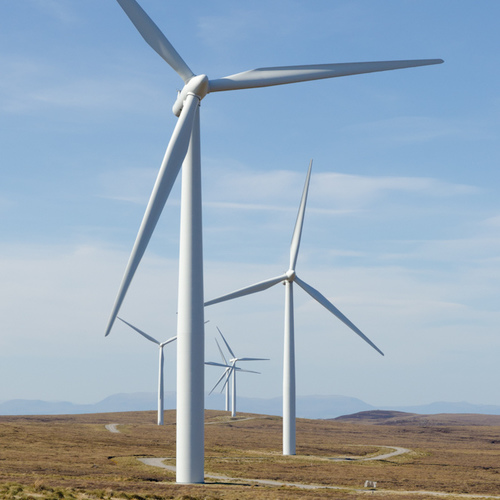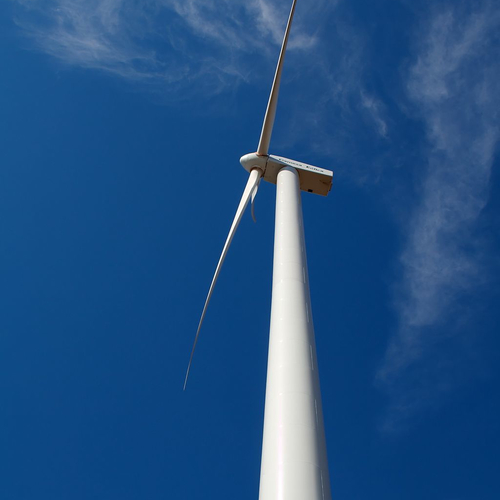
Image Credit: Air Force Space Command
Note: This is fourth and last in a series of blogs highlighting recent progress in onshore and offshore wind energy and examining some of the opportunities, challenges and threats the industry faces. The series was originally published by the Natural Resources Defense Council.
In the past months, there has been a flurry of legislative proposals at the state and federal level to restrict wind energy near military facilities. These proposals, ostensibly designed to protect military operations from the danger of wind turbines, are poorly planned and have the potential to hinder the wind industry’s impressive growth in the United States — and the thousands of jobs it brings with it.
The military is already on the case.
To start, wind farms can indeed affect military operations. For example, turbines can interfere with low-level flight training routes, testing military equipment sensitive to electromagnetic noise, and with military radar systems. These effects have long been known — and taken into account — by both the military and wind energy developers.
While wind turbines could theoretically impact military training and operations, there is little likelihood of that happening for any given project. The Department of Defense (DoD) already runs its own Siting Clearinghouse, and through its process, the DoD and base commanders can consult with developers on any impacts of nearby turbines.
Conflicts with the military mission can be mitigated by shifting turbine placement, upgrading radars and their software, or installing a supplementary radar system to eliminate potential coverage losses caused by turbines (so-called ‘backfill’ radars). If the DoD still objects to a project, they can appeal to the Federal Aviation Administration (FAA) to block any development, and to public knowledge, no wind farm has been built over objections from the military.
A solution looking for a problem
In fact, there are usually few significant problems to begin with, leading the DoD Siting Clearinghouse to state that “the vast majority of projects present no unacceptable impact to DoD mission” after reviewing hundreds of projects. Despite the efficacy of DoD procedures and the success the Clearinghouse has had in facilitating wind development across the country, there have been numerous attempts by state legislatures to circumvent this process.
A 2016 Texas study found that turbine impact on military readiness could not be entirely eliminated, though the authors admitted that they focused on worst-case scenarios and that their radar analyses could not account for the impact of buildings or trees.
Despite the author-admitted issues with this analysis, and that the DoD can block projects they have actual objections to, the Texas legislature began a legislative attack on wind energy near military bases. Despite the DoD reporting that fixed standoff distances are largely useless, the Texas legislature stripped tax incentives from future wind developments within 30 nautical miles of military aviation facilities.
Texas’ action triggered related legislation in Oklahoma, New York, Tennessee, North Carolina, and at the federal level. In Oklahoma, state lawmakers have tried to insert themselves into the process and substitute a state commission for the DoD’s tried and proven procedures. A more draconian bill in New York would flatly ban the development of wind energy within 40 miles of military aviation facilities. NRDC came out strongly against this bill, with Kit Kennedy pointing out that the ban would exclude 5,000 square miles from possible development and doom New York’s attempt to meet its goal of generating 50% of its electricity from renewable sources by 2030. Thankfully, both Oklahoma and New York’s bills have died in committee or conference.
But such misguided legislation has progressed in Tennessee and North Carolina. Tennessee passed a moratorium against wind energy development through at least March 2018 to study other state legislation around wind energy. North Carolina, a state whose fossil-fuel-friendly Republican legislature passed notoriously onerous anti-wind regulations when they took power in 2013, recently had a showdown over the Amazon Wind Farm — the state’s first major wind energy site.
After failing to stop the development over perceived threats to regional radar systems (the developers had already worked with the DoD to ensure that their farm would not be an issue) and even entreating the Trump administration to intervene, a group of Republican state lawmakers attempted to pass even more restrictive anti-wind legislation. In July, Democratic Governor Roy Cooper signed an energy reform bill that was friendly to the solar industry but included a last-minute, Republican-pushed amendment creating a moratorium against wind energy developments through 2021.
The attached moratorium, ostensibly to protect military operations, training, and readiness, was unnecessary, harmful, and not supported by the DoD. The military does not need heavy-handed intervention on its behalf and can guarantee its own operations; for instance, it relocated one Pantego, N.C., proposal for interfering with flight paths and blocked a Hales Lake, N.C., project for interfering with military radar operations.
Congress following suit with their own bad bills
There have been efforts to inflict damage on wind developments near military bases at the federal level as well. Senator John Cornyn (R-TX) and Representative Blake Farenthold (R-NY) imitated their state-level counterparts by introducing heavy-handed, ill-advised bills to prevent wind energy developments from receiving renewable energy tax credits within a certain range of a military aviation or radar facility.
Right now, Cornyn (whose top donor is Exxon Mobil) is pushing an amendment to must-pass defense funding legislation that would reduce the autonomy of the DoD Siting Clearinghouse and force it to take state input into decision-making. Such legislation must be watched, particularly if opponents of expanding renewable energy continue to deploy anti-wind tactics disguised as national security legislation.
Interference in this sphere is unwise: a staggering 35% of today’s wind energy developments (representing between $33 and $51 billion in investment) are located within 50 miles of a military installation. Texas alone, the point of origin for much of this anti-wind legislation, is home to over $10 billion in wind energy investments near military facilities. As legislators in states like Tennessee or North Carolina consider the future of wind energy in their districts, they should know that wind energy is not a threat to national security. It is an essential source of renewable energy and good paying jobs, and should be a vital part of the US grid and economy.
Legislators should not be led astray by clean energy opponents to intervene in DoD processes. Using the military as a political weapon against clean wind energy in such a manner is dirty business; instead, those elected officials should rely on the prevailing facts surrounding these issues, and lean into the rapid transition to a 21st century clean energy economy powered by wind, solar, and energy efficiency (not put up barriers to that clean energy future).
Christian Stirling Haig is a Herbert Scoville Jr. Peace Fellow at the NRDC.
Weekly Newsletter
Get building science and energy efficiency advice, plus special offers, in your inbox.















2 Comments
Forgive me, I realize there
Forgive me, I realize there are legitimate issues here but I can't help finding the notion that the US military can't deal with the existence of wind farms rather amusing. Picture for a moment, a US fighter squadron approaches enemy territory, when suddenly in the distance the rotating blades of a wind turbine come over the horizon.
Green Leader: "Green Leader to Command, we've spotted turbines, they have a wind farm, repeat they have a wind farm."
Command: "Green Leader abort immediately, repeat abort immediately. We can't defend against renewable generation of that magnitude!"
Thanks, Andy!
Made me laugh.
Log in or create an account to post a comment.
Sign up Log in